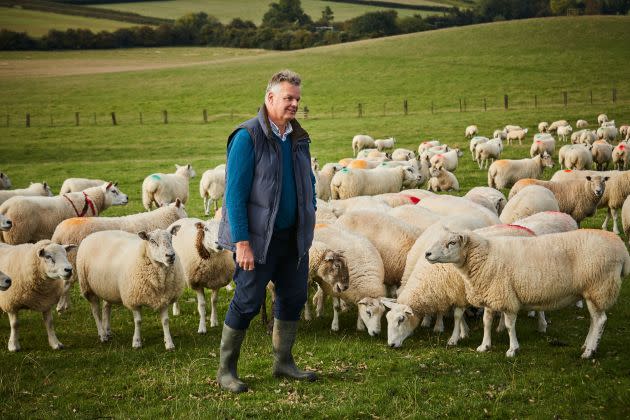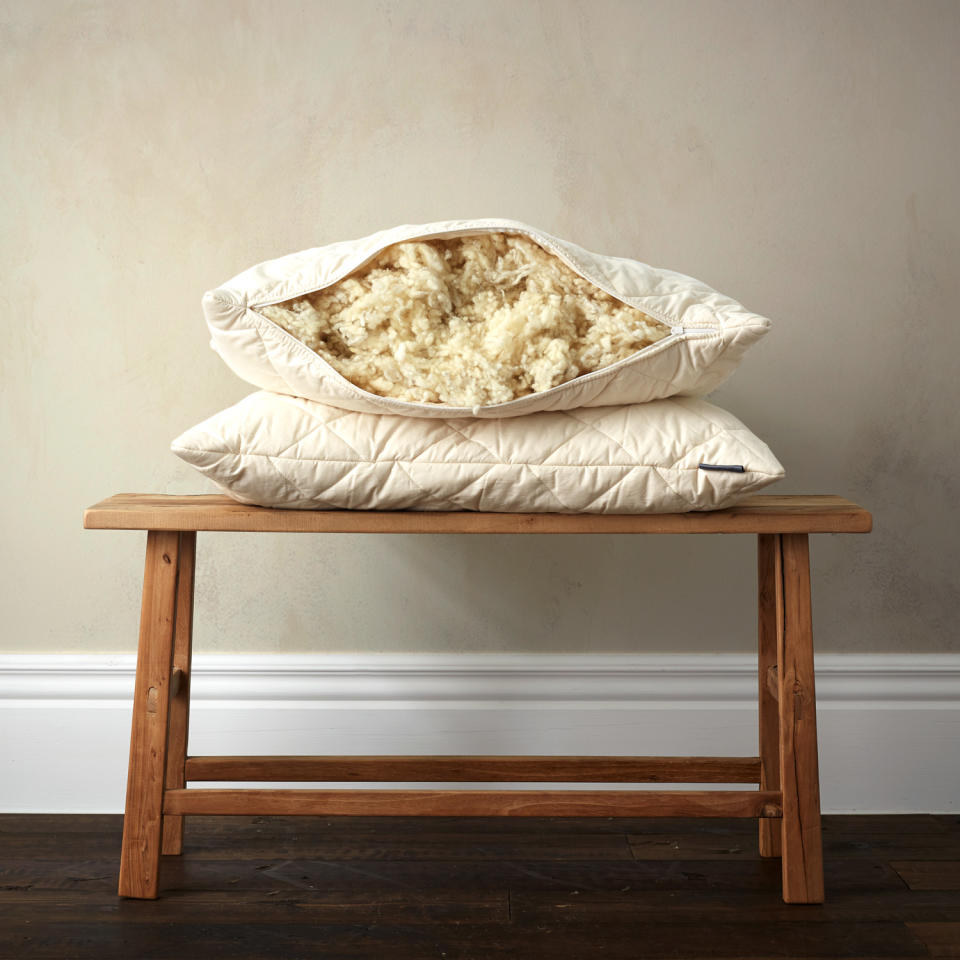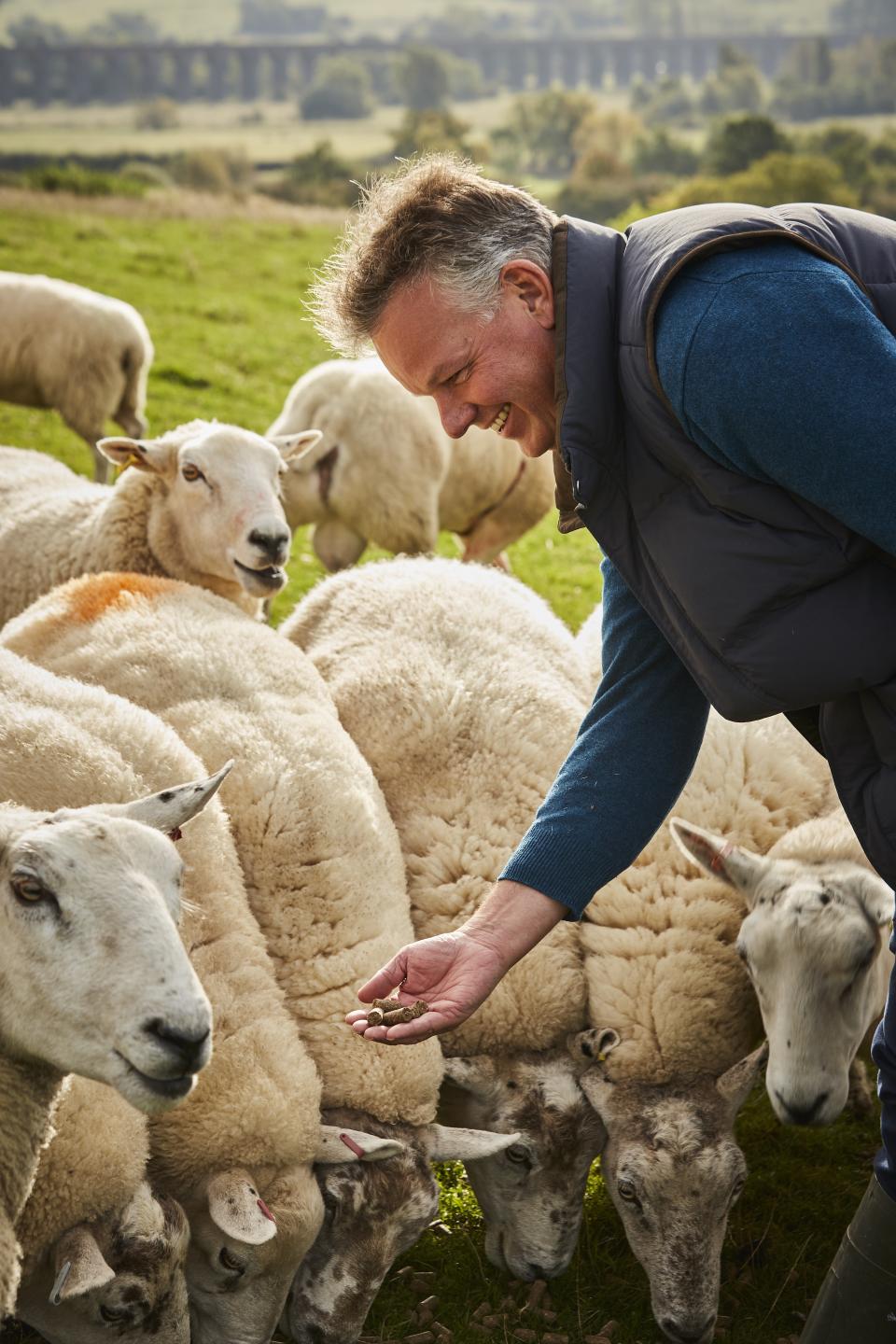U.K. Bedding Company Woolroom’s Quest for Sustainability

“Do you know how long it takes polyester to decompose?” Chris Tattersall asks.
Tattersall is the owner of Woolroom, the U.K.-based bedding company that makes organic washable wool bedding, including wool-filled pillows, comforters and mattresses.
More from WWD
“Seven hundred years,” he intones.
Tattersall, 54, exudes a deep appreciation, bordering on passion, for the fluffy fleece of the upland ewe and a science wonk’s knowledge of the environmentally sustainable process that renders wool machine washable without shrinkage. During a recent trip to New York, he is ensconced at a corner booth at the downtown Manhattan spa and healing hot spot The Well. A bounty of Woolroom products — a comforter, pillows — swells from the banquette. He unzips a pillow and invites a visitor to plunge their hands into the twice-washed, chlorine Hercosett-treated fleece. It is soft enough for Cinderella’s slumber. And it biodegrades in 60 days.
Tattersall — who in a Dickensian flourish happens to share a surname with the famed tattersall pattern popular in shirts and waistcoats donned during equine pursuits — hails from four generations of cotton millers. His great-great-grandfather started the family cotton mill in northwest England; his father later sold the business to department store giant John Lewis & Partners. But since 2012, he has been a wool man. That’s when Tattersall became managing director of Woolroom, which at the time was a two-employee operation based in Bradford, the West Yorkshire city once known as the wool capital of the world.
Back then Woolroom offered washable wool bedding made from the famous British wool, along with various wool accessories (cushions and throws). Tattersall had a vision to expand the company’s distribution routes by focusing solely on bedding. He moved the company to Stamford, an agriculturally rich enclave about 100 miles north of London, in the East Midlands.
At this point in the market trajectory of washable wool, the fiber was evolving from sweaters and socks to underlayers. Smartwool, the outdoor apparel company founded in 1994 by erstwhile Colorado ski instructors Peter and Patty Duke, had a growing customer base of American winter sport enthusiasts convinced of wool’s moisture-wicking prowess.
Tattersall’s goal was to turn wool into the new cotton for the sleep environment. But for all of the advances in textile technology, this still sounded a bit counterintuitive. Even today, the popular perception of wool as hot, itchy, high maintenance and exuding a vaguely funky barnyard odor still lingers. Why would anyone want to sleep on top of it, or under it?
Tattersall offers numerous reasons. Wool is antimicrobial (since wool naturally manages moisture, there is no wet environment for bacteria to grow), so it’s highly beneficial for people with allergies. It’s self-cleaning (natural proteins in wool, called keratin, kill bacteria and neutralize odor), so it requires fewer washes than other fabrics, thereby conserving water. And counter to popular misconception, wool’s natural moisture-wicking properties work to keep the body cool when we’re perspiring.

If Tattersall was going to expand Woolroom’s reach beyond England, where wool maintains a storied place in the history of British textiles, he knew he needed to educate consumers.
“The most important thing was the research. I wanted to prove that wool was fantastic for those with allergies, which we did in 2014 whilst working with Allergy U.K.,” he says, referring to the British nonprofit that doles out seals of approval for products safe for allergy sufferers.
In 2016, he enlisted researchers at University of Leeds — England’s renowned textile college — to conduct a study proving that people sleep better under wool than they do under polyester and even down. The Leeds researchers found that wool is 67 percent more effective than down and 43 percent more effective than polyester in allowing moisture to escape while sleeping. In fact, according to the study, the ubiquitous down comforter is actually least effective in “moisture management.”
It’s not just down and polyester. It’s possible that more of us are having a less-than-regenerative night’s sleep because of the rise in memory foam mattresses and polyester bedding stocked at big-box stores. The former were first marketed to improve sleep through better spinal support, but in many cases actually promoted night sweats.
“It’s all about the movement of moisture away from the body and the skin, keeping us at an ambient temperature so that we sleep deeper,” Tattersall says.
The pursuit of sleep, for many people, has long been elusive. But this anxious era has given rise to a multibillion-dollar wellness industry that, in recent years, has spawned a flotilla of supposedly sleep promoting gadgets, lotions, aromas and supplements. By 2017, Tattersall became Woolroom’s majority shareholder and expanded into North America, responding to a demand for what he calls “natural sleep solutions.” (He became the owner of Woolroom in 2019.)
“I think a lot more people now understand the real benefits of sleep,” he continues. “Particularly post-lockdown, we are all really focused on the quality of our life, the quality of our sleep.”
The state of the planet being left to younger generations is also not exactly conducive to a good night’s sleep. As consumers have become more aware of the deleterious effect of chemicals and pesticides not just on their own health, but the health of the planet, the market for ethically sourced and organic products has steadily risen, particularly in America. Woolroom purchases its fleece from small U.K. farms that are tightly regulated according to Britain’s Animal Welfare Act of 2006, which “makes it an offense to cause unnecessary suffering to any animal,” according to its remit. Further, Woolroom only uses wool from farms assured by the Royal Society for the Prevention of Cruelty to Animals.
“We feel it’s really important to be able to demonstrate to our customers that we know where our wool comes from, we know how those animals have been looked after and the environmental impact that they have,” Tattersall says. “Sheep are bred outdoors all year round. There’s no impact in terms of having to grow crops to feed them because they will just graze on pasture. So the wool grows with natural grass and sunshine as its source. There is nothing more sustainable.”
In 2020, with the pandemic raging, Woolroom introduced a traceable wool program that allows consumers to trace the wool in their products directly to the farm. And last year, Woolroom released a line of organic bedding with the coveted Global Organic Textile Standard accreditation; to date, it’s the only washable wool bedding that has received the GOTS imprimatur.
Fleece is a reliably renewable resource since sheep need to be sheared each spring for their own health and comfort. But making it washable does involve the use of chemicals and water. The industry standard for making wool washable is the chlorine Hercosett process, a chlorine-based shrink proofing treatment invented in the ’50s by the Wool Board in the U.K. This process exposes the fibers to a chlorine solution (much like the water found in a swimming pool), which basically burns away the outside fibers, or hooks, that makes the wool prickly to the touch. Then the material is coated with a polyamide resin that allows the fibers to glide over each other when they are agitated in the washing machine, instead of clumping into a shrunken ball of felt.

Woolroom’s wool is processed in Tielt, Belgium. The Benelux countries, with their copious rivers and canals, are ideally situated for the manufacture of washable wool and Belgium, in particular, has been a leader in the technology. According to Tattersall, the plant uses water from the canals to treat the wool, cleaning it before and after the process and releasing the purified water back into the canals. The proprietary for Woolroom’s GOTS-certified washable organic wool bedding differs in that it does not use chlorine. Rather, the fiber is bathed in a tank with water and natural minerals while oxygen is blown through the tank.
Tattersall — a married father of three sons whose wife, Karen, and eldest son, Ed, also work in the business — concedes that Woolroom’s sustainability pedigree may not be the top reason most consumers decide to spring for a $100 wool pillow or a $300 wool comforter. But the textile industry — and fashion brands — are increasingly being called to account for their contributions to a warming planet. (The world generates more than 2 billion tons of waste annually, with the U.S. responsible for 12 percent, or 268 million tons, of that total despite accounting for only 4 percent of the population, according to the nonprofit Environment America.)
“There are mountains of garbage,” says Tattersall, lamenting the iceberg size heaps of waste littering the oceans and the desserts of the Middle East. “It’s depressing.”
Studies have shown that even non-organic wool that is treated with a polyamide resin does not contribute to the scourge of microplastics in the ocean. If this also helps Woolroom’s customers sleep just a little easier, it is tantamount for Tattersall. Of course, he hopes that his customers will keep their Woolroom bedding for many years. But when they do part with their wool pillow — he calls this the “end of life journey” — it will naturally return to the earth.
“I could take my comforter or my pillow, having cut the zip out, and I could put that on a compost heap in the corner of my garden. And in 12 months’ time, I’ll have nitrogen rich compost that I can put on my roses.”
You can’t say that about polyester.
Best of WWD

